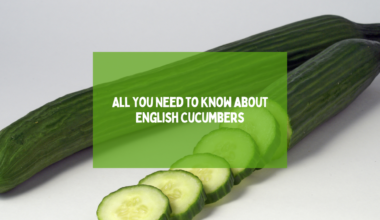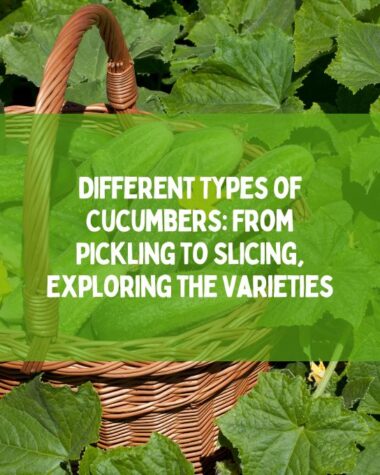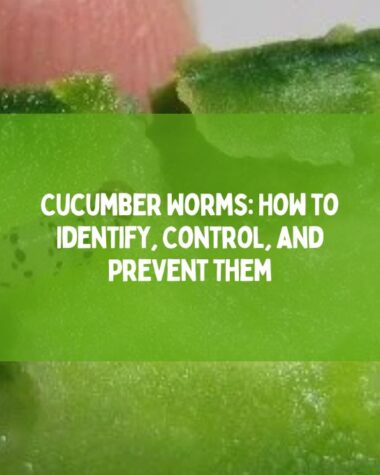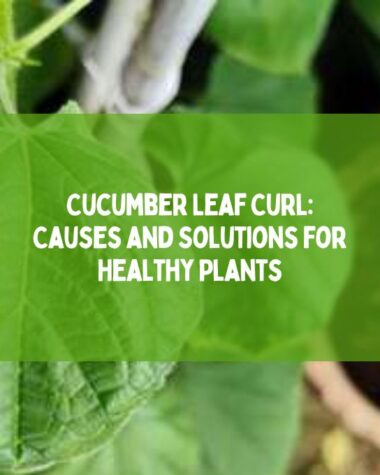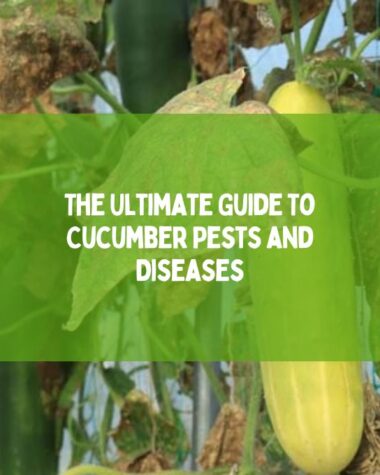Are you looking for strategies to control Cucumber Anthracnose?
Cucumber Anthracnose is a common fungal disease that affects cucumbers, squash, melons, and other cucurbits.
To successfully manage this disease and protect your cucurbit crop, it is important to understand the causes of Cucumber Anthracnose and the available treatments.
In this blog post, we’ll provide tips and strategies for treating Cucumber Anthracnose and preventing further outbreaks.
Cucumber Anthracnose Symptoms

Cucumber Anthracnose is a common disease that affects cucumbers and other cucurbits such as melons, pumpkins, and squash. The disease is caused by the fungus Colletotrichum orbiculare and can have a significant impact on the yield and quality of the fruit. It’s essential to identify the symptoms early on so that you can implement an effective anthracnose cucumber treatment plan.
The first signs of anthracnose cucumber infection are small, water-soaked spots on the fruit. These spots can rapidly enlarge and turn into sunken lesions that may appear dark or black. The lesions may also have a pinkish or orangish margin, which is a telltale sign of the disease.
As the disease progresses, the infected fruit may rot and become soft, making it unsuitable for consumption. Leaves and stems can also be affected, causing them to wilt or die off, further impacting the yield.
If you notice any of these symptoms in your cucumber plants, acting quickly to prevent further spread and implementing an anthracnose cucumber organic treatment is crucial.
Cucumber Anthracnose Causes

Cucumber Anthracnose is caused by a fungus called Colletotrichum orbiculare. Here are some of the most common causes of this disease:
- Infected Seeds: The fungus can spread through infected seeds, which can lead to the spread of the disease.
- Humid Conditions: The fungus thrives in high humidity conditions, especially when temperatures are between 68°F and 77°F.
- Poor Drainage: Excess moisture in the soil due to poor drainage can encourage the growth of the fungus, leading to infection.
- Crowded Plants: Cucumber plants grown too close together can create a microclimate that is conducive to the growth of the fungus.
- Contaminated Soil: The fungus can persist in soil and infect cucumbers planted in that soil.
- Improper Handling: Cucumbers are delicate fruits that require careful handling. Damage to the fruit can create entry points for the fungus to infect the plant.
- Lack of Sanitation: Fungal spores can survive on garden tools, plant debris, and even clothes. Failure to properly sanitize these items can lead to the spread of the disease.
Knowing the causes of cucumber anthracnose is the first step towards effective management. If you suspect that your plants are infected, take prompt action. While DIY cucumber anthracnose treatment may help to manage the disease, it is best to consult with a professional and consider anthracnose cucumber organic treatment options.
Related Reading
- How To Identify and Prevent Brown Spots on Cucumber Leaves?
- Reasons Your Cucumber Leaves Have White Spots
- What Causes Holes In Cucumbers And How to Prevent It?
- Everything You Need to Know About Baby Cucumbers
- Uncovering the Top 10 Surprising Side Effects of Eating Cucumbers
Cucumber Anthracnose Prevention
Preventing cucumber anthracnose is the best strategy to avoid this disease from damaging your crop. Follow these prevention tips to minimize the chances of anthracnose affecting your cucumbers:
- Use high-quality seed that is certified disease-free.
- Avoid planting cucurbits in fields or greenhouses where this disease has been present in previous years.
- Ensure good soil drainage and reduce water stress by providing proper irrigation.
- Rotate your crops every year to prevent a build-up of the pathogen in the soil.
- Keep weeds under control as they can host the pathogen.
- Practice good sanitation measures, such as removing diseased plant debris and cleaning your gardening tools, equipment, and containers regularly.
- Avoid overcrowding plants to reduce the chances of spreading the disease.
- Scout your cucumbers regularly for signs of anthracnose, especially during wet and humid weather. Early detection is key to prevent the disease from spreading.
- Consider using fungicides as a preventative measure. Always follow the label instructions, and rotate between different active ingredients to avoid the development of resistance.
By following these prevention tips, you can reduce the chances of anthracnose affecting your cucumber crop, and ensure a healthy harvest.
Cucumber Anthracnose Treatment
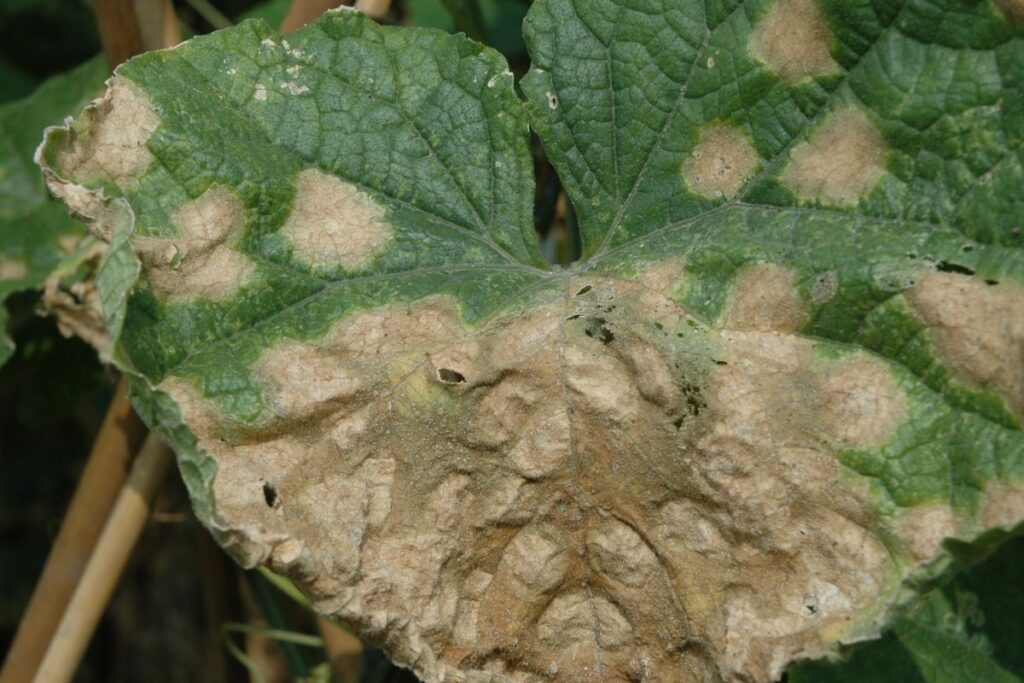
Cucumber Anthracnose is a serious disease that can affect the growth and yield of your cucumber plants. Once the symptoms are identified, it’s essential to take immediate action to control the spread of the disease.
Fungicide applications are an effective way to control the disease. However, it’s essential to choose a fungicide that is labeled for use on cucumbers and specific to anthracnose.
Before using a fungicide, ensure you have identified the disease correctly. Misdiagnosis can lead to ineffective control measures, wasting time and resources.
Fungicide applications must begin early in the growing season and should be reapplied every 7-10 days or as instructed on the label. Ensure you read and follow the instructions on the fungicide label for the right rate and timing.
Cultural controls, such as sanitation, crop rotation, and reducing plant stress, can also help manage the disease. Be sure to dispose of infected plant debris by burning, burying, or removing it from the garden. It’s also essential to practice good crop rotation practices and avoid planting cucurbits in the same spot for at least two years.
Lastly, it’s essential to maintain healthy plants and avoid stressing them through overwatering, under-watering, and nutrient imbalances. Proper irrigation, fertilization, and overall care can help keep the plants healthy and resistant to disease.
Related Reading
- Yellow Eggplant: The Uncommon and Nutritious Vegetable
- How To Start A Pumpkin Patches?
- 7 Natural Ways: How to keep bugs off zucchini plants in Your Garden
- All You Need to Know About Campari Tomatoes
Home DIY Cucumber Anthracnose Treatment
If you notice that your cucumber plants are infected with anthracnose, it’s important to take action as soon as possible. While there are chemical treatments available, you may also want to try some DIY treatments that can be just as effective.
One option is to use a homemade mixture of baking soda and water. Simply mix one tablespoon of baking soda with one gallon of water and spray the solution onto your plants. The baking soda helps to alkalize the plant’s surface and prevent the fungus’s spread.
Another home remedy is to use a neem oil spray. Neem oil is a natural fungicide that can help to prevent the spread of anthracnose and other plant diseases. To make your own neem oil spray, mix two teaspoons of neem oil with one gallon of water and spray onto your plants.
Finally, you may want to try using compost tea to treat anthracnose. Compost tea is a mixture of compost and water that contains beneficial microorganisms that can help to control fungal diseases like anthracnose. To make your own compost tea, fill a 5-gallon bucket with compost and water and let it steep for 24-48 hours. Then strain the liquid and apply it to your plants.
While these home remedies can be effective, it’s important to remember that prevention is always the best course of action. By practicing good cultural practices like crop rotation, proper irrigation, and good sanitation, you can prevent anthracnose and other plant diseases from taking hold in the first place.
